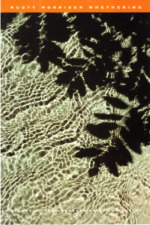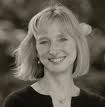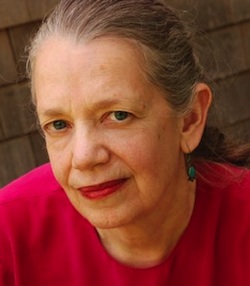
| Jacket 40 — Late 2010 | Jacket 40 Contents | Jacket Homepage | Search Jacket |
This piece is about 6 printed pages long.
It is copyright © Jaime Robles and Jacket magazine 2010. See our [»»] Copyright notice.
The Internet address of this page is http://jacketmagazine.com/40/r-morrison-rb-robles.shtml
Rusty Morrison
Whethering
reviewed by
Jaime Robles
64 pp., Center for Literary Publishing, Paper, USD$14.95, ISBN: 9781885635075
Winner of the Colorado Prize

‘. . . life is the unknown essence concealed in the space which supports it’.
— I. Rice Pereira
1
Up until about fifteen years ago, if you were born and raised in the San Francisco Bay Area, the natural world would be part of your memory and your sense of the world, so strong was the presence of the bay and ocean, the sky and hills. Even now, despite the incursions of population and its attendant malls and freeways, the environment continues to shape itself into a huge, spherical, and embracing space. So it is not surprising that Rusty Morrison’s book Whethering is an intricate interweaving of the elements of California nature in the mind and memory of the writer.
2
Morrison, who was born and raised in the Bay Area, began the poem cycles of Whethering during her stay at Djerassi, an artists’ residency located in the coastal hills of the mid-peninsula. The landscape there is unadulterated coastal California, and as such can evoke all the natural elements that lie buried beneath the region’s urban/suburban sprawl: it is primal for the native. And being primal it assumes functions for the writer that lay outside those of romanticism: it acts both as a grid within which the anxieties of the individual can be charted, as well as a reality that the self can anchor within.

Rusty Morrison
3
There are four cycles within Whethering: ‘Climate Conditional’, which describes the passage of time through the day as well as a kind of conditionality of the self in relationship to nature and language; the Sequences, which describe various emotions of anxiety and which combine with sequences of ‘sky’ and ‘morning’ that likewise describe emotional transits; the Field Notes, short descriptive pieces that use small, easily overlooked details of the natural world as catalysts of philosophical speculation; and a set of more randomly named and connected pieces: ‘Making Space’, ‘The sporadic-proverbial Grasp’, ‘Window (closed)’, ‘Of Angle, More Than Matter’, and ‘Positions of the Dance’. Rather than keep the cycles distinct, Morrison has broken them apart and rewoven them into a whole of alternating parts.
4
There is too much coherency between the poem cycles to believe that the writing ‘I’ is anyone other than the poet, and in this there are links to the romantic and confessional traditions; however, the I is neither the wise poet imparting learned understandings about the connection of nature and the divine nor the poet whose daily life is filled with horrors beyond that of everyday human experience and complacency.
5
Rather, the I of Whethering is caught in a state of indeterminacy, of uncertainty fled into anxiety. Some of this uncertainty, which is carefully and credibly examined by the author, is caused by the limitations of language, both spoken and written, and its tendency to be changeable. Language’s mutability, which can take on the quality of deceptiveness, is not a matter of semiotic slippages created by the connection of arbitrary sounds to meaning but, rather, the subordination of language to the experiences of time and memory, which in turn creates an ambivalent relationship between the writer and the word.
6
The cycle of Sequences most directly deals with this ambivalence. In the poem ‘Risk Sequence’ the word as ‘more articulated/points of reference’ diminishes the details of the moment, a phenomenon which is described with the metaphor of ‘a heavy, sheeting kind of rain’ that puts the present moment and the self at ‘risk’. Behind much of this examination of linguistic anxiety lies the poststructuralist stance that language mediates all experience. It’s a stance Morrison plays with but never fully subscribes to.
7
Most of the Sequences are titled as states of anxiety: Escape, Risk, Lost, Mistake, Caution; however, ‘Sky Sequence’ and ‘Morning Sequence’ also trace emotional states that are connected to the anxiety of being lost and being directionless within the unknown through the inadequacy of language. In the former poem, a writer’s block places the writer within a mental landscape that is vast and difficult to navigate:
8
Just ink-stray and stalled thought in the sky part
of the sentence.
Vertigo, the full rotation. What word can face that
Standing up? No ladder
Like the eye. (24)
9
But it is precisely writing and the poem that Morrison is using as a form of map, an interior construction that will place her within an emotional, and therefore physical, security. The struggle continues throughout the book.
10
In the latter poem, ‘Morning Sequence’, the projection of human attributes onto domestic surroundings cannot save the human lost in an unfamiliar setting:
11
Place self here, but where exactly, qualifiers coquettish.
Even transforming setting into language cannot move the self in a willed direction:
Sentences busily bracketing,
but really there’s no getting any farther inside the house
or out. (49)
12
The various Field Notes present poetic language in its most rendered down form; they are observations presented as syntactical fragments, hence ‘notes’. They have only a slight connection to narrative, and therefore suggest a kind of falling apart, as well as the feeling that what is recorded is what is essential. They suggest an answer to the question: What remains?
13
In ‘Field Notes: 1–6’, observed details in nature are compared with the rational, represented by words and their less concrete aspect: meaning. ‘Field Notes: 7–12’, which are set during the day’s darker and more quixotic times of dusk, twilight and night, play with the changeability of time and light through words like ‘resemblance’, ‘suggestion’, ‘shadow’, ‘hidden’, and ‘capering’. ‘Field Notes: 13–16’ and ‘17–20’ mix observations about three swallow hatchlings, an endless sky, and lichen.
14
The final epigraph of ‘Field Notes 17–20’ resolves the book’s discourse on anxiety: ‘Perhaps the most important word is ‘and’. — Rosemary Waldrop’. The book ends with:
15
— lichen the fungal body
dense bewilderments call it purpose
to anchor and as if from nothing
absorb
(52)
16
It is within the separate poems — those unattached to a cycle — that we come across the various permutations of Waldrop’s (and Morrison’s) ‘and’, which is the author’s relationships to the other, whether that other is a lover or a book, nature or word. In all cases the other is an ‘at least equal to’ being and not subordinate to the conscious mind of the writer as lover or reader, human or writer.
17
In the multipart ‘Making Space’, Morrison’s main device is conflation of the human body with nature. This merging is not pathetic fallacy but rather a concession to the indivisibility of the human body from nature and a realization that within that undivided state the body is fragile and vulnerable. Further, if the body can be interpreted by the intellect, than the body is capable of fear: ‘we are thick/with the foliage of the body’s fright//roots endlessly orienting’ Implicit with the concept of conflation is the opposite idea of boundaries, which in this poem are continuously breached: ‘never ignore slippage’. The author in this poem becomes immanent in nature.
18
At moments the author escapes the loss of boundary between self and nature and becomes a separate being: ‘perspective is glass/on a world I neither//occupy nor contain’. The longing expressed in ‘Window (closed)’ for a more than ‘illusory’ entrance into the natural world, however, is ‘unrelenting’.
19
In preparation to writing ‘The sporadic-proverbial Grasp’ Morrison read through Nietzsche’s lectures of pre-Platonic philosophy, and the poem records how the essays affected her emotionally and intellectually. Also entitled ‘notes’, the various sections of the poem take fragments from Nietzsche’s lectures and make them part of longer syntactically linear musings on life and the divine — ‘to bring two/stones together/makes a god, the surfaces/perpendicular’ — that at times seem metaphysical: ‘in every pour is spill/tasted’. In order to subvert the hierarchy between the poem’s titles and text Morrison embedded the section titles within the text of other sections of the poem. As throughout most of the Whethering, boundaries are breached, only this time willfully, as if to work against language’s tendency to attach and discriminate.
20
‘Of Angle, More than Matter’ finds the poet in relation to the lover: the tongue of language becomes a tongue of intimacy, and the question posed is one of distance: ‘Our oldest arithmetic being the shortest distance between our distances’. The confusions — and the anxiety — here involve how much the relationship between lovers is one of equivalence, especially when at any moment either could feel subsumed in the other.
21
The trope Morrison uses is that of mathematical physics with its equations, measurements, and ‘endless counting’. Even as she places the movements of the couple on a grid of angles and squares, the ‘I’ and the ‘you’ are conflated with the surrounding world, and this world of domesticity is charged with emotion: ‘Scour the coffee stains on our nerves. Glue the veins in our cracked porcelain. Turn every wind-up key in our toy silences’. The final understanding is through the physics of the body: ‘Always an idea in our midst, we name it flesh’. But the flesh has its own mind in relation to the abstract: ‘Easily enough, print articulates in columns, but body never fits its word’. The idea is similar to that in ‘Climate Conditional (evening forecast)’ in which language becomes the I’s division from nature, and the body similar but fractious: ‘call it time/invert body to invent a word’.
22
‘Positions of the Dance’ is the libretto to a performance that was a collaboration between artists — poet, visual artist, and dancer/choreographer. In a series of images that seem more loosely formed the poet sketches out the troubling questions about relations that are implicit throughout the book in phrases that align to the poem’s left and right margins. These separated ‘halves’ of the poem leave an open white space between them where strange beings escape to negotiate the rift:
23
Don’t we think
to fix
with intention,
to make of an act idea.
Its burial site
Is language, hand with hand, lip with lip, stone
with stone.
We lie down on the studio floor
and drift,
bodies on the world’s back —
(41)
24
Rusty Morrison’s Whethering is a brilliant and complex book that devises a new constellation between human, nature, and language, even as it shifts through possibilities of relation between the three. But most significantly it posits nature and the physical world as the means through which a human, distressed by being, locates herself within realities. And it does that without assuming a hierarchy of values or by ascribing to an ideology.

Jaime Robles
Jaime Robles writes text for both musical and visual settings. She has published work in Conjunctions, First Intensity, Luna, New American Writing, ShadowTrain and Volt, among others. Formerly the literary acquisitions editor for The Lapis Press, she is currently the publisher of Five Fingers Press and Woodland Editions. Her latest book of poems, Anime, Animus, Anima, will be published in 2010 by Shearsman Books.